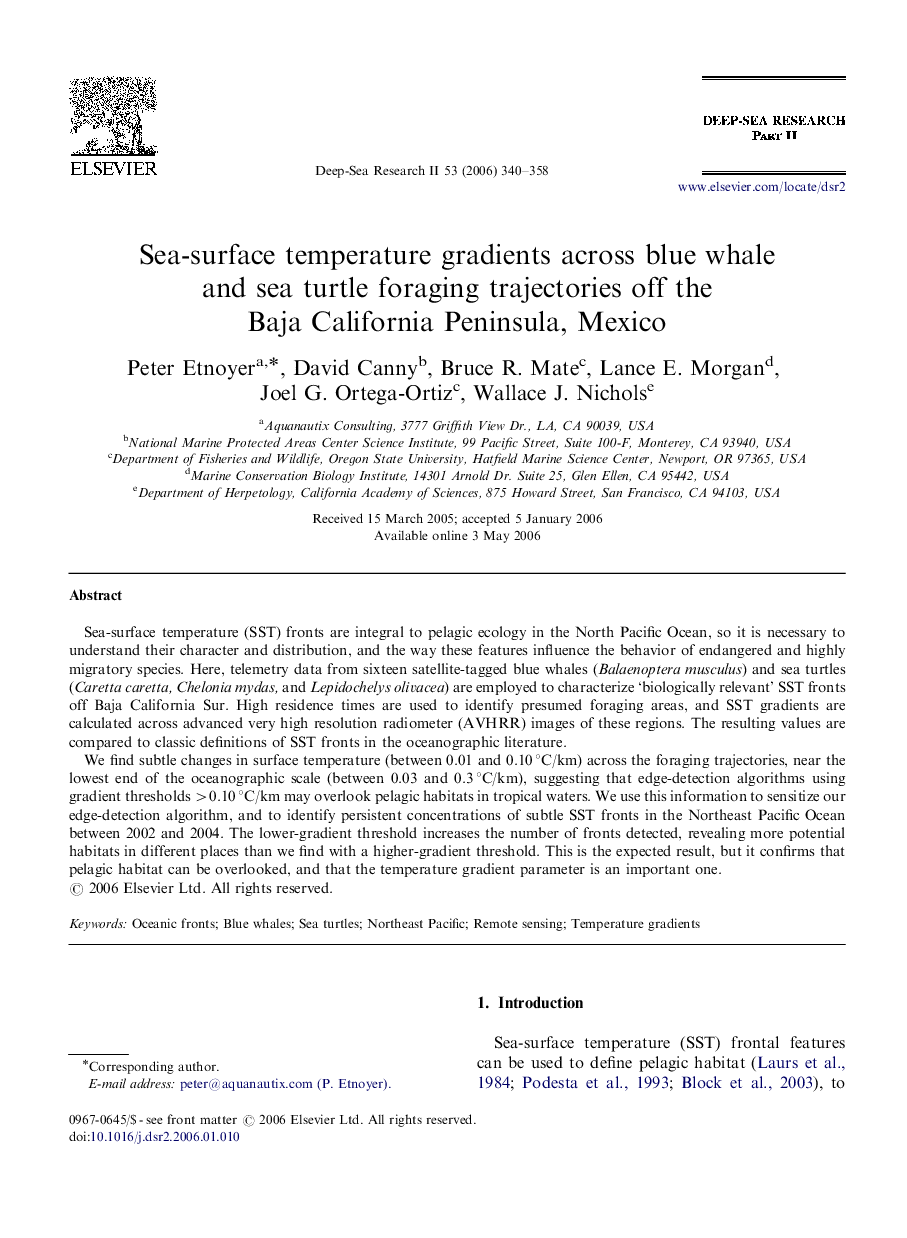| Article ID | Journal | Published Year | Pages | File Type |
|---|---|---|---|---|
| 4537876 | Deep Sea Research Part II: Topical Studies in Oceanography | 2006 | 19 Pages |
Sea-surface temperature (SST) fronts are integral to pelagic ecology in the North Pacific Ocean, so it is necessary to understand their character and distribution, and the way these features influence the behavior of endangered and highly migratory species. Here, telemetry data from sixteen satellite-tagged blue whales (Balaenoptera musculus) and sea turtles (Caretta caretta, Chelonia mydas, and Lepidochelys olivacea) are employed to characterize ‘biologically relevant’ SST fronts off Baja California Sur. High residence times are used to identify presumed foraging areas, and SST gradients are calculated across advanced very high resolution radiometer (AVHRR) images of these regions. The resulting values are compared to classic definitions of SST fronts in the oceanographic literature.We find subtle changes in surface temperature (between 0.01 and 0.10 °C/km) across the foraging trajectories, near the lowest end of the oceanographic scale (between 0.03 and 0.3 °C/km), suggesting that edge-detection algorithms using gradient thresholds >0.10 °C/km may overlook pelagic habitats in tropical waters. We use this information to sensitize our edge-detection algorithm, and to identify persistent concentrations of subtle SST fronts in the Northeast Pacific Ocean between 2002 and 2004. The lower-gradient threshold increases the number of fronts detected, revealing more potential habitats in different places than we find with a higher-gradient threshold. This is the expected result, but it confirms that pelagic habitat can be overlooked, and that the temperature gradient parameter is an important one.
